When it comes to Spanish tourist destinations, Barcelona tends to get all the glory. But there are other amazing cities in Spain that travelers should visit. Nestled in the province of Castile and León, the Spanish city of León is a magical city that draws visitors from across the world. In this top things to see in León list we will explore the history of the city. The city was founded in the 1st century B.C., and used to be called Legio. An appropriate name, seeing as the city was founded the Roman legion Legio VI Victrix. Its English inhabitants Romanized the name into León, and the name stuck.
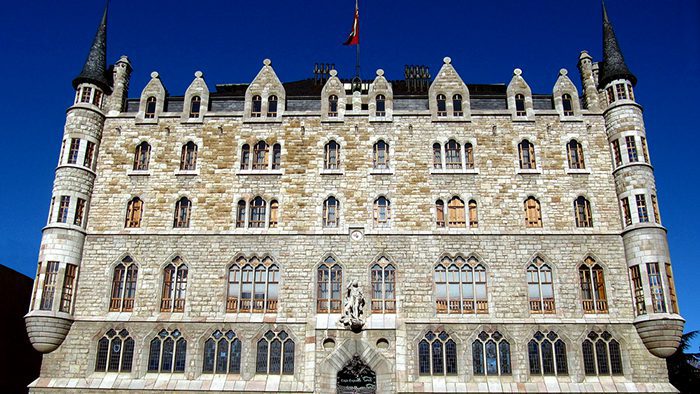
After the Roman Empire collapsed, the city saw centuries of turmoil and war. After changing hands between Muslims and Christians a few times, the city became part of the Kingdom of León in the year 910. It eventually became an empire three centuries later.

The most obvious theme in the city is authenticity. While other Spanish cities have shed their pasts and raced ahead, León remains true to its cultural roots. From the ancient Romans that developed it, to the Moors that inhabited it, all the way up until King Fernando III of Castile inherited it – León has a plethora of tales to be told about its rich past. Even the food is unique and most of the city’s restaurants only serve authentic Leonese food that mainly features pork, lamb, and other scrumptious filling foods.
The buildings feature Leonese architecture, and the newspapers are printed in the traditional Leonese language, which is a Romance dialect of Astur-Leonese. Everything about the city is geared towards preserving its rich heritage. León is also an important stop for pilgrims on the Camino de Santiago pilgrimage.
Check out our 10 Things to See and Do in Burgos, Spain
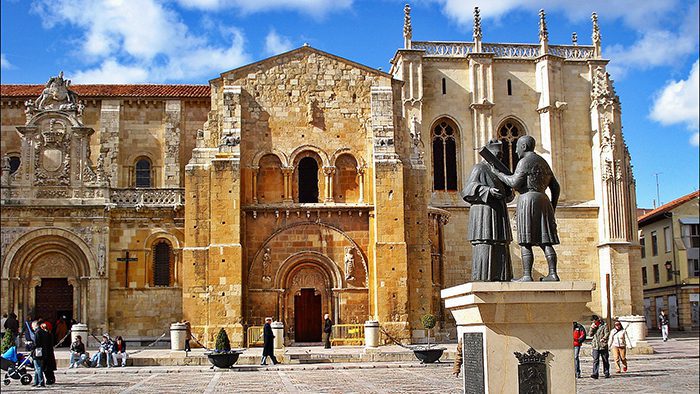
León is a one of a kind place- the kind impossible to leave without mourning the history that you left behind. León’s summers are short and its winters are long. The best months to travel to León are September, October, April, and May to avoid the severe heat and cold. León’s treasures are many, but one outstanding attraction is Casa de los Botines- an original Antoni Gaudí construction. It is one of only 3 of his works that exist outside of the Catalunya region of Spain. Here are the top things to see in León!
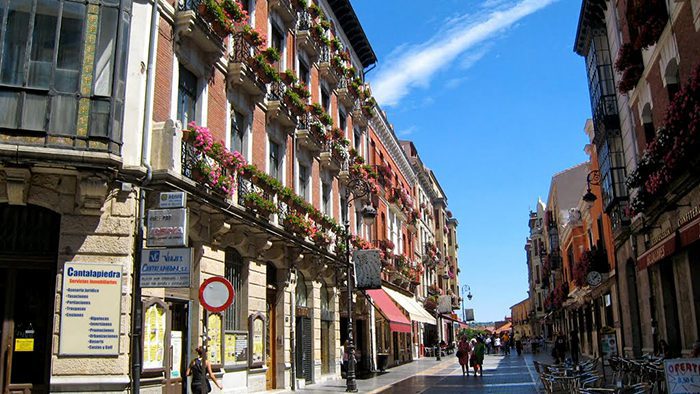
León is a beautiful city in its own right, but Calle Ancha is in a league all its own. Running from the Cathedral to Santo Domingo Square, it is the city’s main pedestrian street and is constantly bustling with foot traffic. I have had the chance to visit numerous Spanish cities, and this is one of the most scenic streets I have walked. Tourists will find boutiques, restaurants, cafés, souvenir vendors, and a fun nightlife scene when the sun goes down. Calle Ancha literally translates into broad street, and this street is definitely broad, busy, and beautiful.
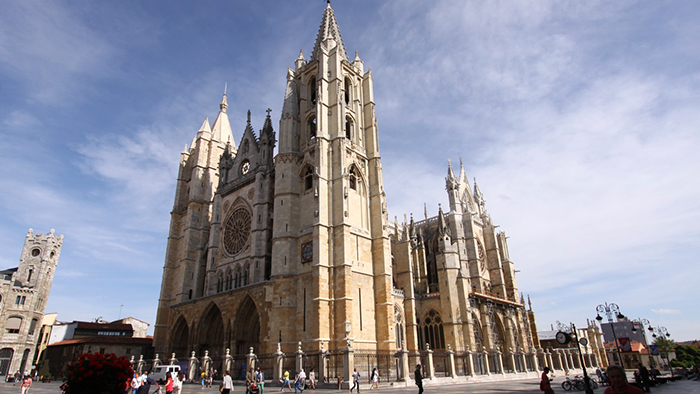
Dedicated to the Santa María de la Regla, Spanish for Our Lady of Rule, the Santa María de León Cathedral is a stunning Gothic church that was built over the remains of 2nd century Roman bathhouses. Locally, the cathedral is referred to as the Pulchra Leónina or the House of Light. Construction began in the 13th century under the rule of King Ordoño II, and was completed by the end of the 16th century. The cathedral has been undergoing restorations for the past 400 years.
The main façade includes a southern clock tower. Once inside, visitors will find the church to be a lavish repository of art and architecture. The retrochoir features alabaster sculptures by Juan de Malinas, Jusquin, and Copin. The stained glass, which includes a detailed rendition of a large rose and the Virgin Blanca, is some of the most exquisite in the world. A silver urn houses the remains of San Froilan, León’s patron saint. The in-house museum also hosts a magnificent collection of religiously inspired artwork, with over 1,500 pieces in the collection on display. There are Romanesque statues of the Virgin Mary, several codices, a Mozarabic bible, and the first manuscript in the Leonese language.
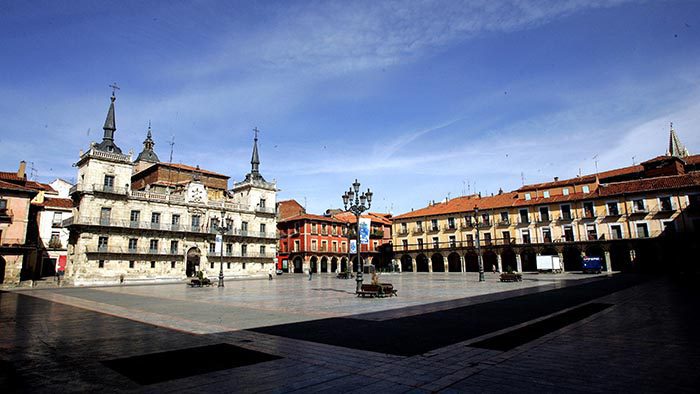
Constructed in the 16th century, the Plaza Mayor is the sprawling open central plaza of León, and is also home to the NH Plaza Mayor Hotel (see Hotel Exclusive section.) There is a biweekly market that convenes on Saturdays and Wednesdays at 8.am. during which farmers sell fruits and vegetables. For a look at the true León, under the shadow of the nearby cathedral, stop by the Plaza Mayor for a quick look around.
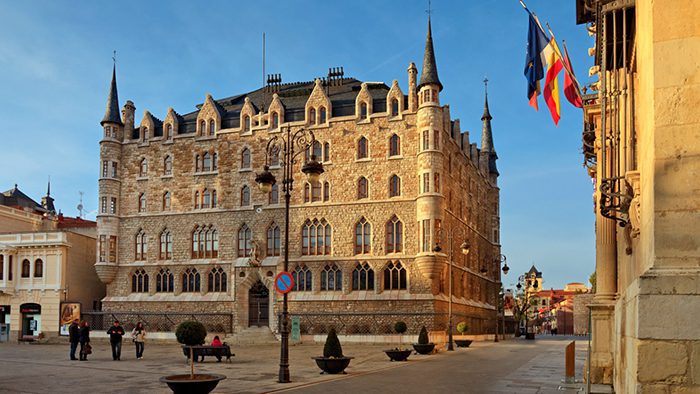
Built in the 19th century, Casa de los Botines is another modernist creation by flamboyant 18th century architect Anton Gaudí. Gaudí built the house for Mariano Andrés and Simon Fernandez, customers of Eusebi Güell, who was Gaudí’s patron and also commissioned him to create Parc Güell in Barcelona. The building was intended to be a residential area with an attached warehouse, and it was named for the former owner of Andres’ and Fernandez’s company.

The four-story building channels a neo-Gothic theme that Gaudí used to honor the style of the other buildings in León. The inclined roof, the façade, and the moat are all part of this overarching design theme. Unlike Gaudí’s other works, the façade of the building actually has a structural function and the frame structure is built upon a unique system of iron pillars. This citadel-like structure is now home to the local branch of the Caja España Bank.

The Basilica of San Isidore is a Romanesque and Gothic-style chapel located atop the site of a former Roman temple once dedicated to Mercury, the messenger god. It is dedicated to Saint Isidore of Seville, who once served as the archbishop of Seville and whose remains are housed in the church. Nowadays it is a popular tourist attraction because of its several Christian depictions, including the carving on the sacrifice of Abraham on the Puerta del Cordero (the lamb’s door) and the 12th century murals in the Royal Pantheon. There are a total of 44 royal family members buried in the Basilica’s Royal Pantheon, 23 of which were Kings. The Basilica also houses a museum with exhibits of medieval art, bejeweled religious items, processional fabrics, and a mozarabic bible from the year 960.
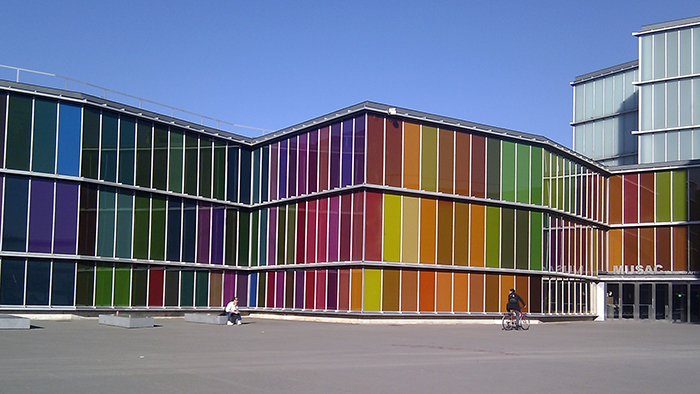
The Museum of Contemporary Art of Castilla Y León is an award-winning cultural lamdmark inaugurated in 2005 by Felipe, Prince of Asturias, and it has delighted visitors ever since it opened for business. The stained glass windows inside León’s own Santa María Cathedral inspired MUSAC’s multicolored exterior panels. It has been recognized worldwide as a fundamental part of the international contemporary art scene. Exhibitions feature an impressive collected of photographs, ceramics, sculptures, paintings, short films, and more creations by international artists. It cost 33 million Euros to construct this fascinating place, and every cent went into its modern design structure that features irregularly shaped rooms, concave walls, and unique floor plan. The MUSAC is an impressive space that will surely hold something to inspire you. The museum is closed on Mondays and admission is free.
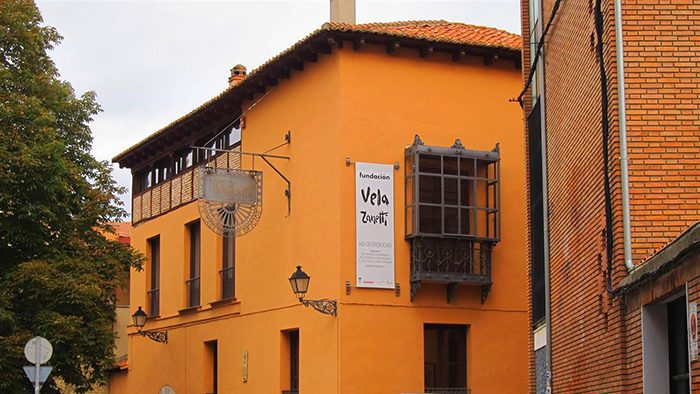
Jose Vela Zanetti was a prolific Spanish artist who was born and died in Burgos, Spain. He spent many years of his life though, in León. He moved to León at an early age and began training as a painter. He was a rebel, always paving his own path. His art is unmistakable, featuring strong lines and bold colors. He usually depicted open fields or broad expanses of land, and this made his work accessible by all. He was a multifaceted man though, and also dabbled in poetry and pottery. Fundacion Vela Zanetti commemorates many of his works. The museum is closed on Mondays.
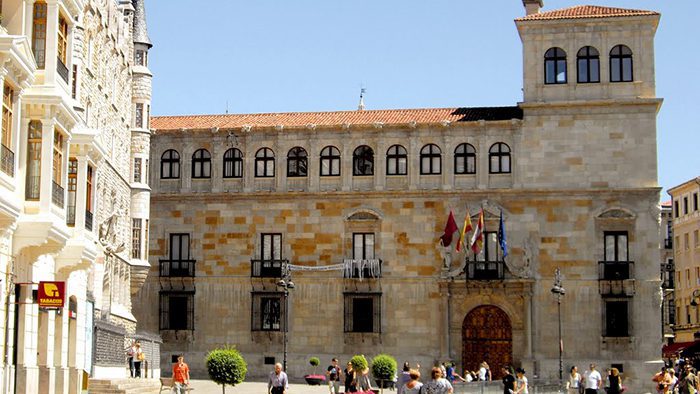
The seat of the provincial government of León, the Palacio de los Guzmanes is a 16th century Renaissance structure that was originally built for the prosperous and affluent Guzman family. It is located between Broad Street and Calle Ruiz de Salazar in front of Casa de los Botines. Construction began in the 15th century but the was never completed. The architect, Rodrigo Gil de Hontañón, also designed buildings in Segovia and Salamanca. Notable features include the gargoyles atop the arches, the three types of Greek columns, balconies, the façade, and the two corner towers. It was deemed a historical monument in the 1960s.
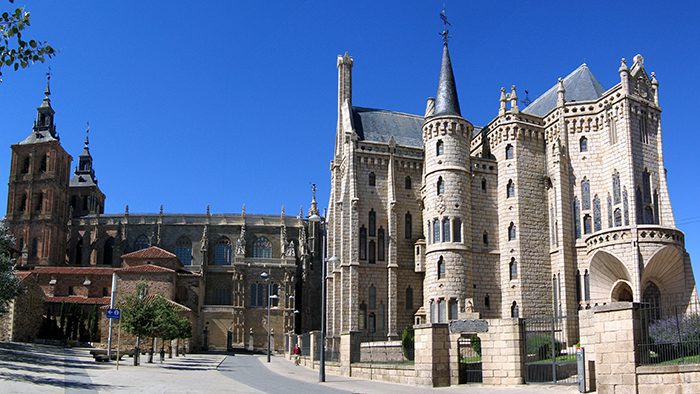
The Tuerto River runs through Europe, northwestern Spain, and through the small town of Astorga. With a population 12,100 people, Astorga has made a name for itself based on its distinctive customs and architecture. It is located in an area known as Maragatos- known for the striking dresses worn by the local women.
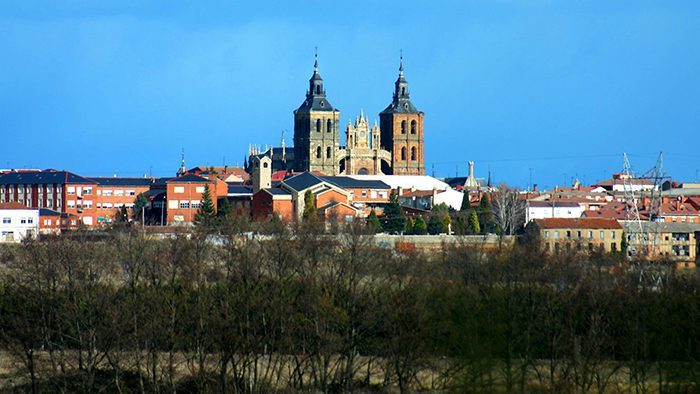
The city was founded by the Celtics, but quickly fell into Roman hands, who used it as a key military stronghold. Alfonso I of Asturias took a particular interest in the city, and attempted to use at as a base for his attacks against the Moors in the seventh century. It served as the main city of northwestern Spain, and was even called Urbs magnifica by some, which translates into beautiful city. All of this ended with Alfonso and his war against the Moors, which left the city ransacked and abandoned. It was reborn a few centuries later when French traders found it a useful stopping point on their travels.
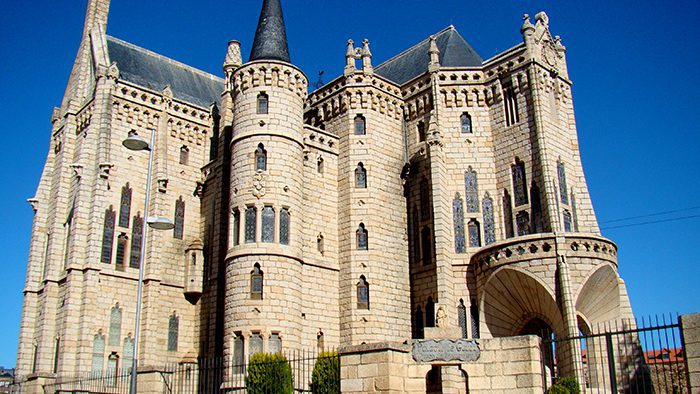
Nowadays Astorga is a popular tourist destination and an important stop for pilgrims en route to Santiago de Compostela (Camino de Santiago.) The small, but charming town is home to one of Catalan modernist Antoni Gaudí’s architectural masterpieces. The Palacio Episcopal de Astorga (Episcopal Palace of Astorga) is a medieval style structure that Gaudí constructed for his longtime friend bishop Joan Baptista Grau. Gaudí asked Grau to send him pictures of the land, and from those pictures the plans for the church were created. Since Gaudí was busy with construction of the Sagrada Familia at the time, he sent Catalonian workers to do the job without him. The Palacio Episcopal de Astorga, also known as Museo de los Caminos, was finally completed in 1915, and is one of very few works by Gaudí that exists outside of Barcelona. Visitors can tour the interior and exterior of the palace for a small fee of 3 Euros. It is closed on Sundays, Mondays, and on holidays.
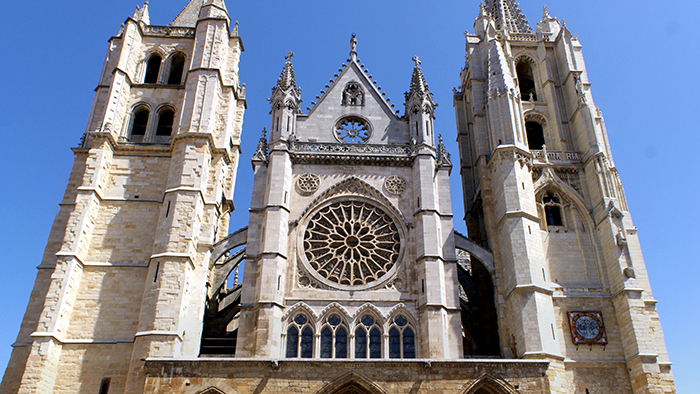
León is a charming small town with friendly people and a great deal of history within its ancient Roman city walls. The food is heavy and the drinks are plenty in the bars of the Barrio Húmedo. Leonese cuisine is quite filling, and typical dishes from the region include morcilla (blood sausage) served with just about anything from eggs to potatoes, and cecina- a stew made with seven types of meat, beans, and vegetables. But don’t become too concerned about your waistline because León is a great city for walking off those calories. With most attractions being walking distance from each other, you will burn off most of what you eat. Summer in León is relatively short, and so the cuisine evolved to fill empty stomachs in cold weather.
The four-star NH Plaza Mayor Hotel is located in an ideal spot in León’s main square, and will make you feel at home every time you walk through its doors. During the day take a stroll down Calle Ancha and be sure to visit Gaudí’s Casa de los Botines. By night head to Plaza de San Martín to enjoy free tapas with your drinks at any of the lively bars in the neighborhood. To get to Astorga from León, take the N-120 for about 47 Kilometers until you see the exit for León. In addition to Antoni Gaudí’s Palacio Episcopal, Astorga also features a chocolate museum with a gift shop full of delicious mementoes. León is a great place to stop for a couple of nights on your way to either Asturias or Galicia. You will be glad you did.
Have you ever been to León? What do you think of our list of the top things to see in León? Leave a comment below!
Counter
101 Countries • 1432 Cities
Whine And Cheers For Wine says:
Thanks for the informative review. We’re off to Madrid tomorrow then Leon later in the week. Looking forward to experiencing it all in person. Salud!